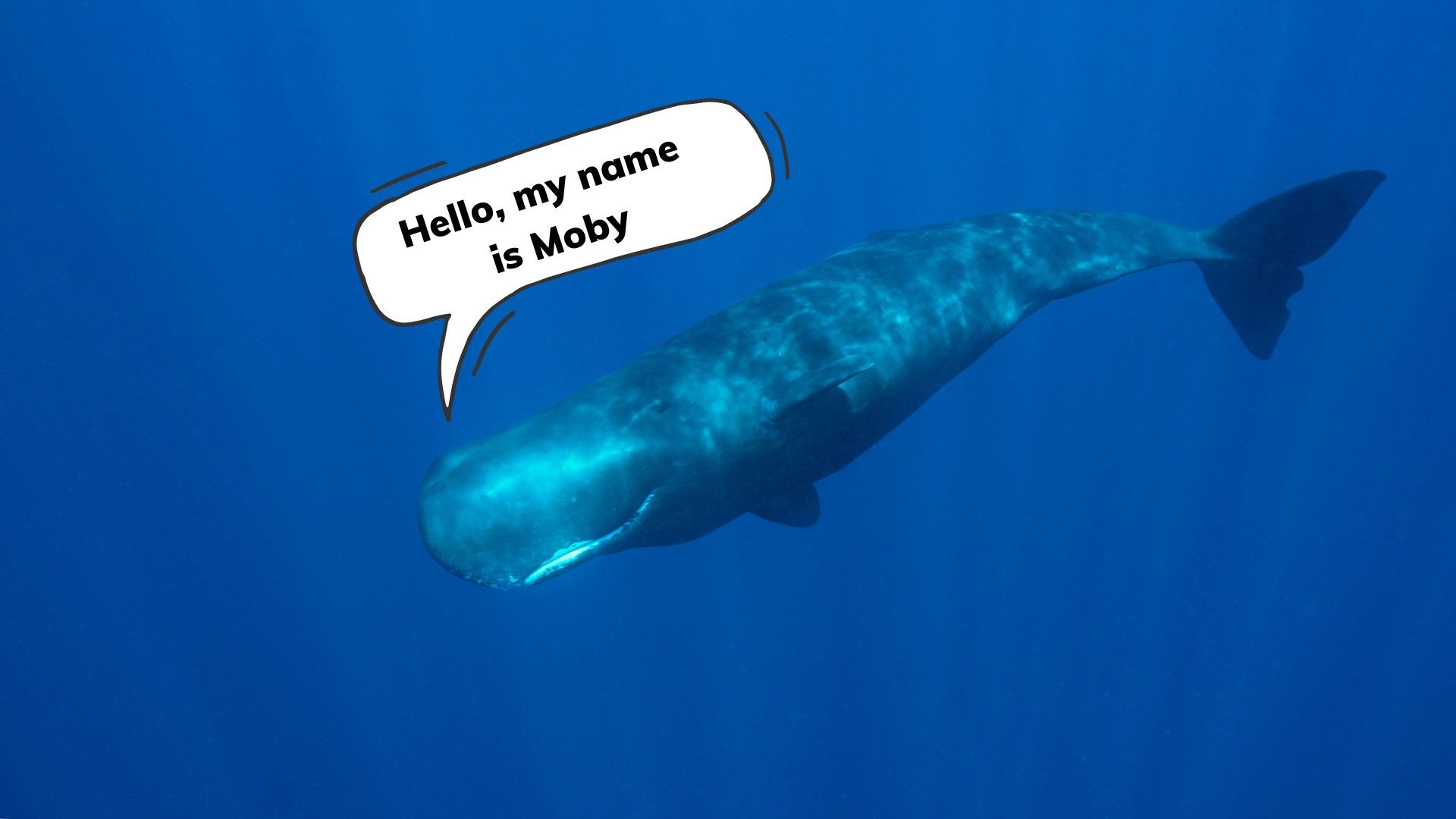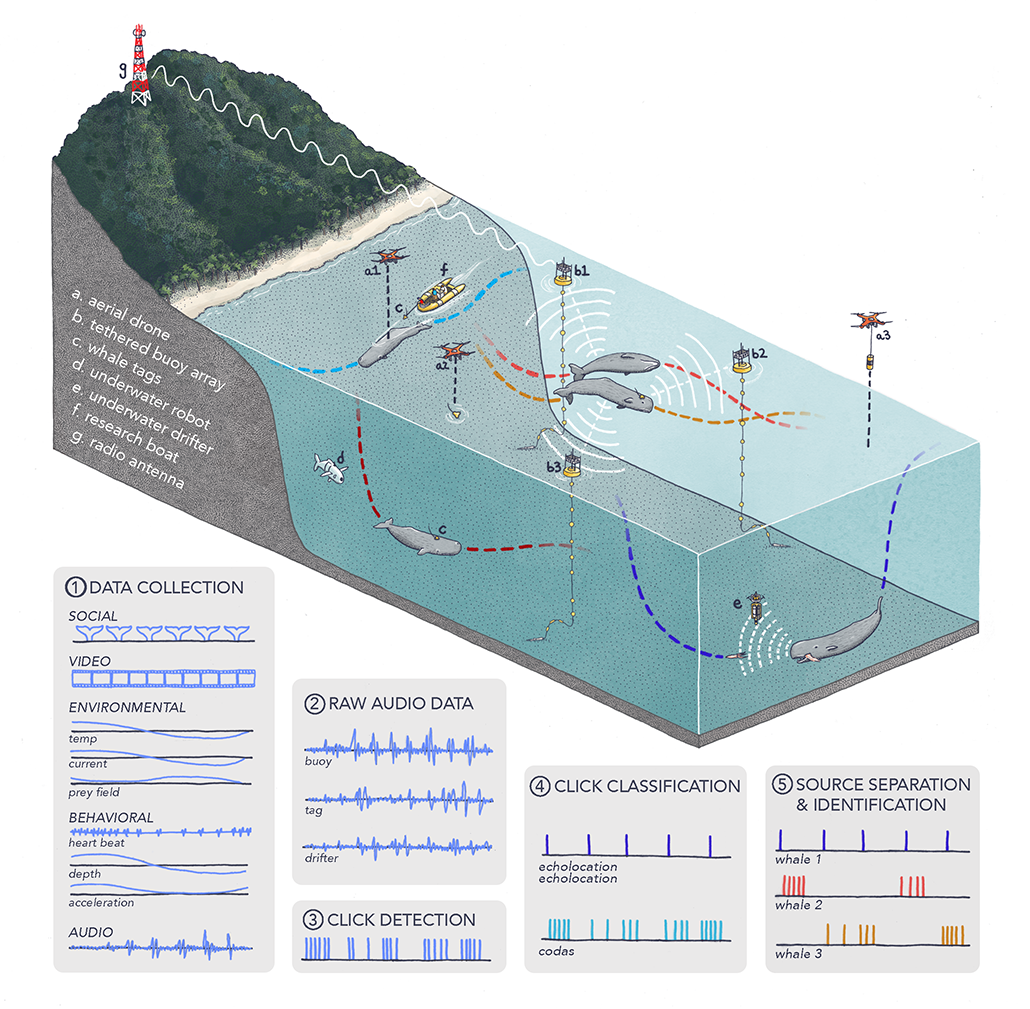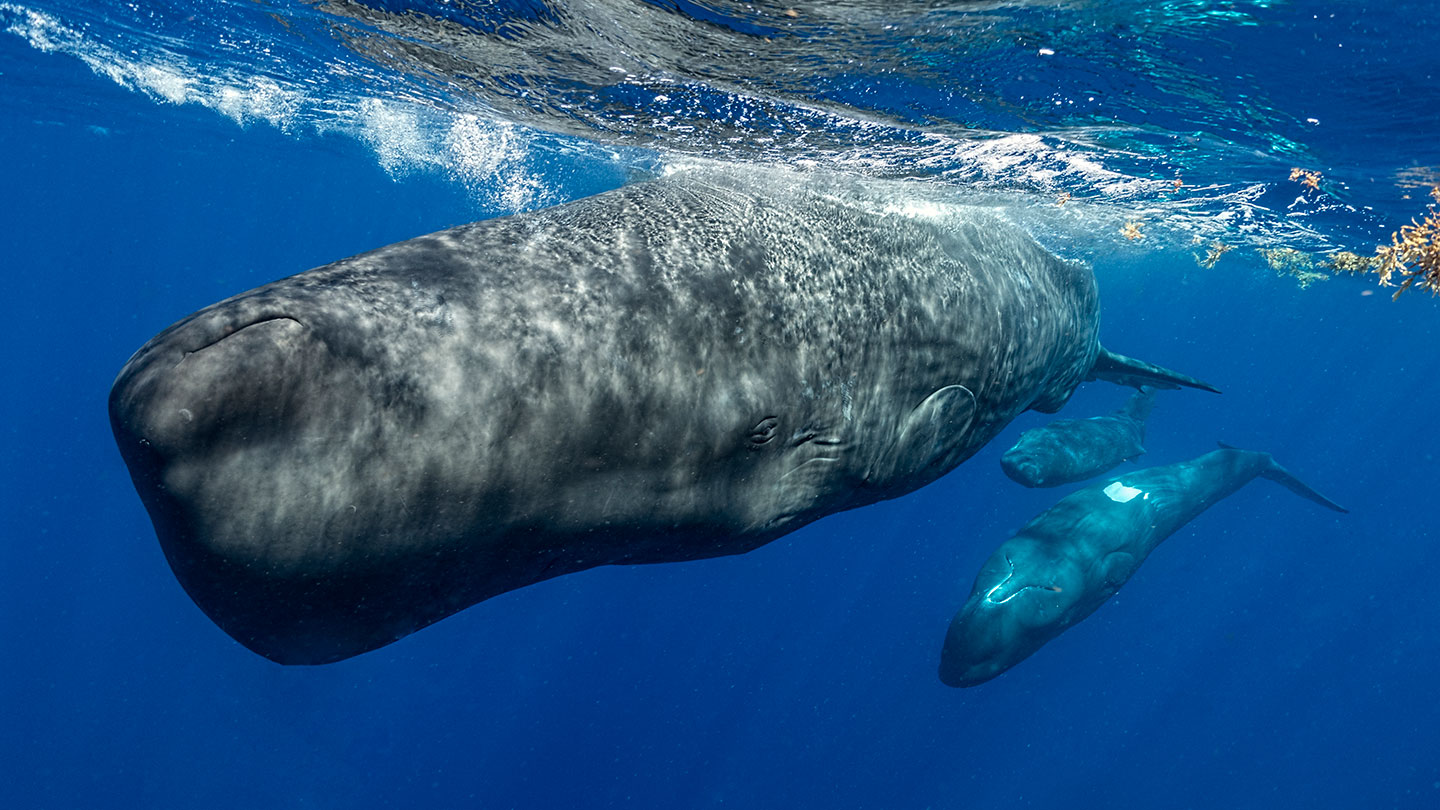
🐳 AI could help us talk to animals
Scientists use artificial intelligence to study animal communication. AI can help identify the meaning and context of animal sounds. Project CETI uses AI and underwater technology to study sperm whale communication.
Share this story!
- Scientists use artificial intelligence to study animal communication.
- AI can help identify the meaning and context of animal sounds.
- Project CETI uses AI and underwater technology to study sperm whale communication.
Animal communication is a fascinating and complex phenomenon that has intrigued researchers for decades. However, deciphering the meaning and context of animal sounds is not an easy task. That’s why some scientists turn to artificial intelligence (AI) to help them understand animal languages.
AI can analyze large and diverse datasets
One of the challenges of studying animal communication is the amount and variety of data that needs to be collected and analyzed. Different animals have different vocalizations, behaviors, and habitats, which makes it difficult to compare and generalize across species. Moreover, animal sounds can vary depending on the situation, such as mating, hunting, or warning.
AI can help researchers overcome these challenges by using machine learning algorithms to process large and diverse datasets of animal sounds. Machine learning is a branch of AI that enables computers to learn from data and make predictions or classifications. For example, AI can help identify the species, gender, age, and emotion of an animal based on its sound.
AI can reveal the structure and meaning of animal sounds
Another challenge of studying animal communication is to understand the structure and meaning of animal sounds. Animals can produce complex and nuanced sounds that convey information about their intentions, preferences, and emotions. However, human ears and brains are not well-equipped to decode these sounds, especially if they are unfamiliar or subtle.
AI can help researchers reveal the structure and meaning of animal sounds by using natural language processing (NLP) techniques. NLP is a branch of AI that enables computers to understand and generate natural language, such as speech or text. For example, AI can help segment animal sounds into units, such as syllables or words, and analyze their patterns, such as grammar or syntax. AI can also help infer the meaning and context of animal sounds by using semantic analysis techniques, such as word embeddings or topic modeling.
Project CETI uses AI and underwater technology to study sperm whale communication
Project CETI is a research initiative that aims to decode the communication of sperm whales, one of the most intelligent and social animals on the planet. Project CETI stands for Cetacean Translation Initiative, and it is led by a team of scientists, engineers, and conservationists from different disciplines and backgrounds.
Sperm whales are known for their ability to produce loud and complex sounds, called codas, that they use to communicate with each other. Codas are composed of sequences of clicks that vary in frequency, duration, and rhythm. However, the meaning and function of these codas are still largely unknown.
Project CETI uses AI and underwater technology to study sperm whale communication in their natural habitat. The project involves deploying a network of hydrophones (underwater microphones) that can record the sounds of sperm whales over large areas and long periods of time. The project also uses drones and satellites to track the movements and behaviors of the whales.

The data collected by the hydrophones, drones, and satellites are then analyzed by AI algorithms that can help identify the individual whales, their social groups, their locations, and their codas. The AI algorithms can also help segment the codas into units, such as clicks or phrases, and compare them across different contexts, such as feeding, resting, or socializing. The goal is to find patterns and rules that can reveal the structure and meaning of the codas.
Project CETI hopes to unlock the secrets of sperm whale culture and cognition
Sperm whales are considered to be one of the most intelligent and social animals on the planet, with large brains, complex societies, and long-term memories. They have been observed to exhibit behaviors such as cooperation, altruism, teaching, learning, and cultural transmission.
By understanding how sperm whales communicate with each other, Project CETI hopes to gain insights into their culture and cognition, such as their values, beliefs, emotions, and personalities. The project also hopes to raise awareness and appreciation for these majestic creatures, and to promote their conservation and protection from threats such as overfishing, pollution, noise, and climate change.
For a more in-depth examination of this topic, please check out How artificial intelligence could help us talk to animals.

By becoming a premium supporter, you help in the creation and sharing of fact-based optimistic news all over the world.



